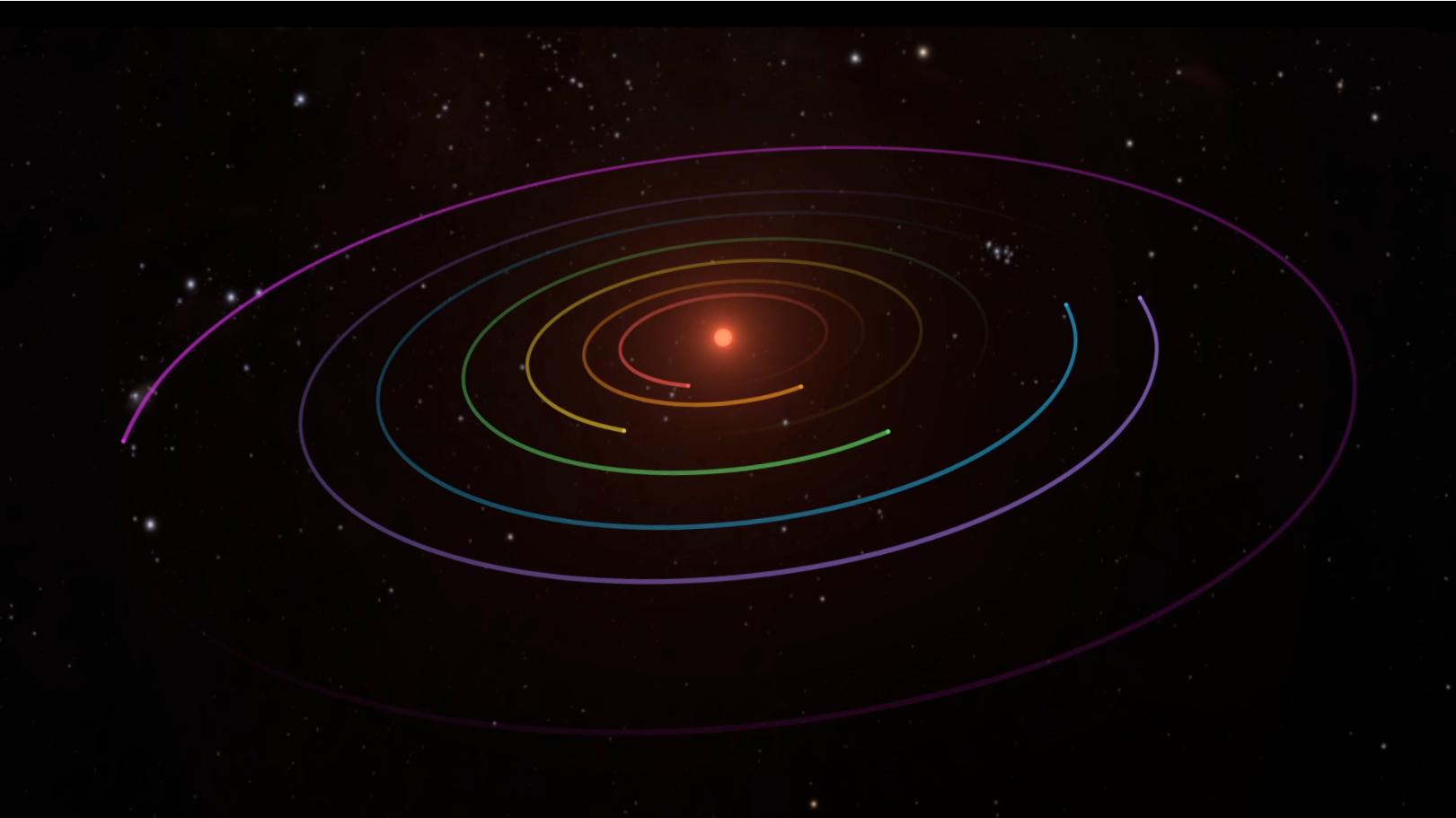
|
TRAPPIST-1 Planetary Orbits and Transits
- Click the image above for a larger view
- Full-Res JPEG (1621 x 911) (61.7 kB)
- Full-Res TIFF (1621 x 911) (1.4 MB)
Caption:
This video details a system of seven planets orbiting TRAPPIST-1, an ultra-cool dwarf star. Over 21 days, Spitzer measured the drop in light as each planet passed in front of the star. Spitzer was able to identify a total of seven rocky worlds, including three in the habitable zone where liquid water might be found.
This animation visualizes the change in light as each planet passes in front of its star. The study established the planets' size, distance from their sun and, for some of them, their approximate mass and density. It also established that some, if not all, of these planets are tidally locked, meaning one face of the planet permanently faces their sun.
The system has been revealed through observations from NASA's Spitzer Space Telescope and the ground-based TRAPPIST (TRAnsiting Planets and PlanetesImals Small Telescope) telescope, as well as other ground-based observatories. The system was named for the TRAPPIST telescope.
Background Info:
NASA's Jet Propulsion Laboratory, Pasadena, California, manages the Spitzer Space Telescope mission for NASA's Science Mission Directorate, Washington. Science operations are conducted at the Spitzer Science Center at Caltech, also in Pasadena. Spacecraft operations are based at Lockheed Martin Space Systems Company, Littleton, Colorado. Data are archived at the Infrared Science Archive housed at Caltech/IPAC. Caltech manages JPL for NASA.
For more information about the Spitzer mission, visit http://www.nasa.gov/spitzer and http://spitzer.caltech.edu .
Cataloging Keywords:
| Name | Value | Additional Values |
|---|---|---|
| Target | TRAPPIST-1 | |
| System | TRAPPIST-1 | |
| Target Type | Exoplanet | |
| Mission | Spitzer Space Telescope | |
| Instrument Host | Spitzer Space Telescope | TRAPPIST |
| Host Type | Space Telescope | Ground-Based Telescope |
| Instrument | ||
| Detector | ||
| Extra Keywords | Color, Infrared, Orbit, Water | |
| Acquisition Date | ||
| Release Date | 2017-02-22 | |
| Date in Caption | ||
| Image Credit | NASA/JPL-Caltech | |
| Source | photojournal.jpl.nasa.gov/catalog/PIA21427 | |
| Identifier | PIA21427 | |
